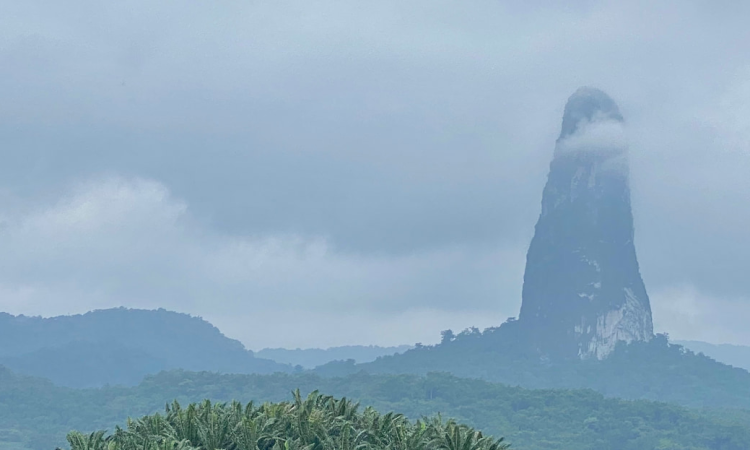A wild crone scurried out of the stone hut, wearing wellies and a plastic mac. ‘Faigh far mo thir!’ she wailed, shaking her head and pulling the cattle gate firmly shut. I looked to Fiona for assistance, but she just shrugged, while my two other companions carried on kicking Fiona’s upturned bike.

I’d been seduced by the strapline: ‘185 miles, 10 islands, six causeways, two ferries.’ And the exotic notion of traversing an archipelago had temporarily blinded me to the fact that the Outer Hebrides were off the north coast of Scotland, rather than somewhere tropical. My supporting peloton comprised my wife Fiona, who as a native Scot could supposedly understand the lingo; plus two old varsity mates, Posh and Studs, who as keen cyclists could supposedly handle any requisite repairs.
We’d sailed there from Oban, enduring a five-hour voyage through what a deckhand cheerily referred to as ‘grumbly seas’, with porpoises surfing beside the ferry, rain lashing the decks and my stomach churning. In a typical year, several thousand cyclists undertake the Hebridean Way, but this was the Year of the Virus and most of the cycle racks were empty.
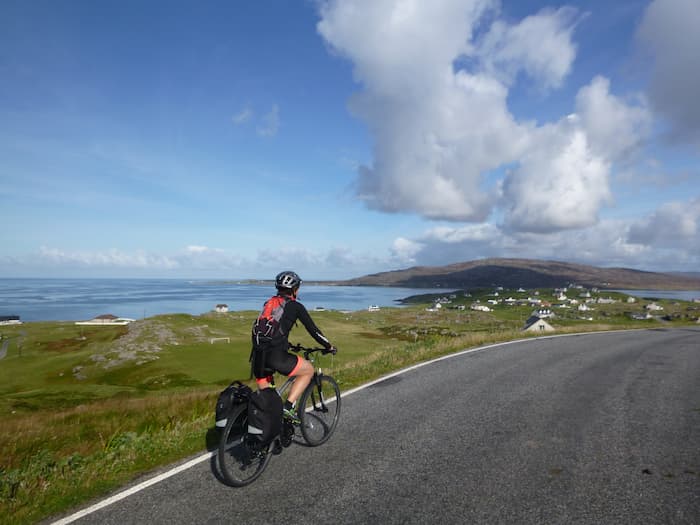
Disembarking at Castlebay, the main town on Barra, we were greeted by a modest gale. Though spending the night here, as purists we felt obliged to touch the route’s official start, some 10km across a causeway on Vatersay, the southernmost inhabited isle (population 90). Vatersay’s tourist attractions comprised a memorial to a sunken passenger ship, the wreckage of a flying boat and a rain-swept beach, where I proposed inaugurating our journey with a swim - but the idea was forcefully vetoed. So, we cycled back to Castlebay for a curry in the UK's second-best Indian restaurant, according to the 2010 Tiffin Cup.
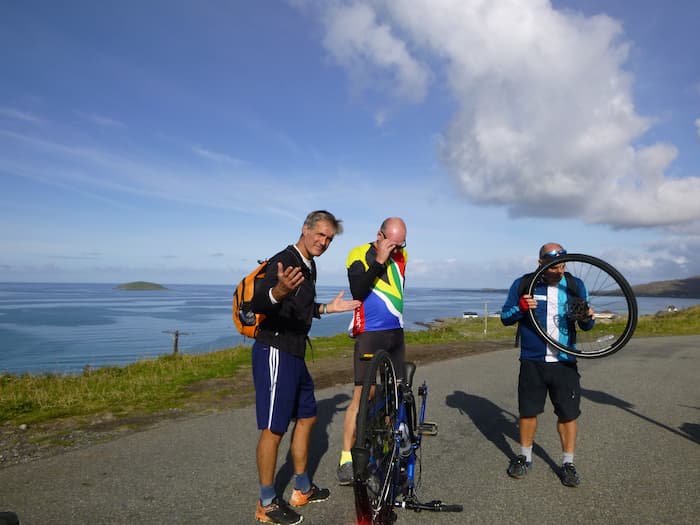
We rose early the next morning, with a ferry to catch from Aard Mhor, up on Barra’s northeast tip. Loading our panniers under a lapis sky, it was as if we’d woken in a different country, and we were even strafed by midges. A tranquil one-hour crossing took us over to Eriskay, 5km in length, named after a Viking called Eric, and boasting a bumpy meadow rated by FIFA as one of the world’s most unique football pitches.
More by Matthew

Just beyond the harbour, we stopped at a crescent of champagne-coloured sand where, on 23rd July 1745, 24-year-old Charles Edward Louis John Casimir Sylvester Severino Maria Stuart (aka Bonnie Prince Charlie) landed with a few weapons, seven supporters and ambitions to replace the ruling British royal family with his own. A recently erected cairn commemorated his arrival, though at the time locals were less impressed, advising him to sail home to Europe. Undeterred, he crossed to the Scottish mainland, raised an army from amongst the Highland clans and marched on London. With the sun alighting the spangled sea, it was easy to be filled with hope and believe anything was possible. So inspired, Fiona went searching for Prince Charlie’s Rose, a hardy endemic flower that - according to local lore - arrived as seed on his shoes, but she couldn’t find any.
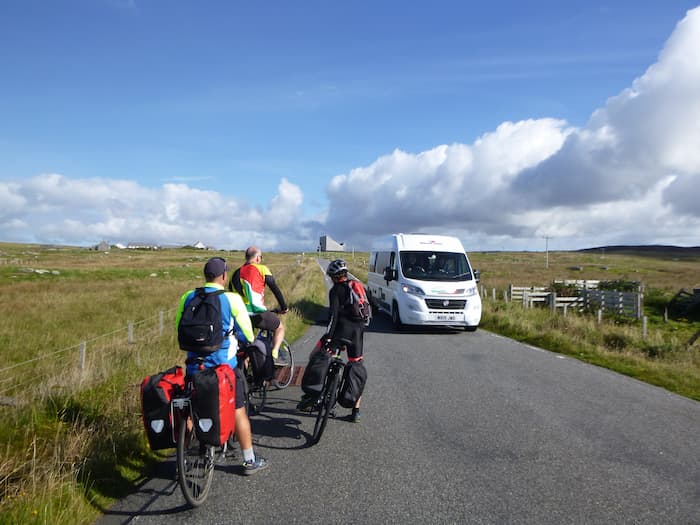
From Eriskay, we cycled over to South Uist via a 1½ km causeway, with signs cautioning of crossing otters. Pedalling up the island’s west coast, with fells on our right, the sea on our left and a warming sun on our backs, was cycling at its best and the normally laconic Studs was moved to declare he was as close to euphoria as he’d ever been - though Posh punctured his mood by threatening to tell his wife. Shortly after that, Posh’s front wheel jammed and Fiona’s derailleur disintegrated.
Halfway up South Uist, we followed a dirt track towards the birthplace of Flora MacDonald, the island’s most famous resident, till we were abruptly stopped by an old woman rushing out of a small croft to bar our way and berate us incomprehensibly in what we later assumed was Gaelic. ‘Yer nay cumin on ma land becuz o’ the virus,’ she translated, glaring fiercely. We must have looked sufficiently downcast, for she sighed and opened the gate. ‘Ah well, now yer ‘ere, yer might as well ‘ave a look.’

In fact, there wasn’t much to see - just a cairn marking where Flora MacDonald was possibly born in 1722 - but the affixed plaque attested to an eventful life. In June 1746, she helped Bonnie Prince Charlie escape the pursuing British army, after his uprising had been crushed at Culloden and he was on the run. Subsequently emigrating to North America, she was thrown off her farm during the US War of Independence, because her husband fought for the British. And on her return voyage to Scotland, she helped repel a pirate attack. When she died, aged 68, several thousand attended her funeral and 300 gallons of whisky were consumed at her wake.
We returned from the memorial to find the old lady once again barring the gate, though with a more amiable demeanour. Indeed, we couldn’t escape as she recounted how she was a descendant of Flora MacDonald, had lived on the island all her life, but had once travelled to Bournemouth – or we think that’s what she said.
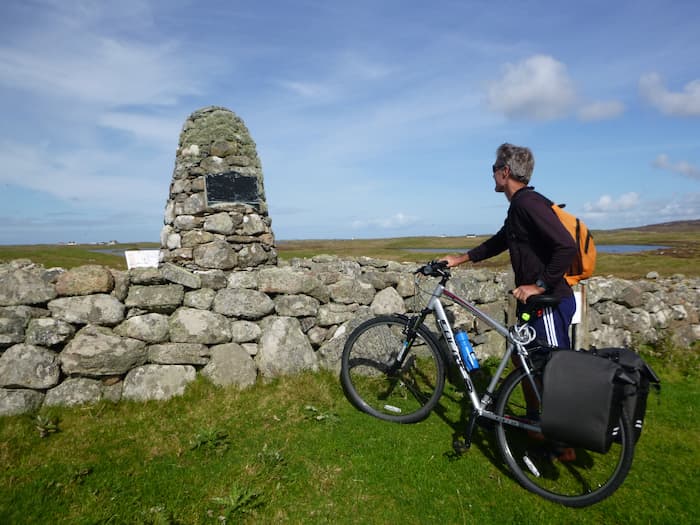
Another causeway took us over to Benbecula, where we stayed the night. When the Hebridean Way officially opened in 2016, round-the-world cyclist Mark Beaumont completed it within 24 hours, though he did have his own boat to escape the strictures of ferry timetables. Conversely, we were planning to do the 300km journey in six days - allowing time for some hiking and hangovers. And unburdened by camping paraphernalia, our itinerary was rather determined by where we could find lodgings - so on some days we had long shifts, while on others we dawdled.
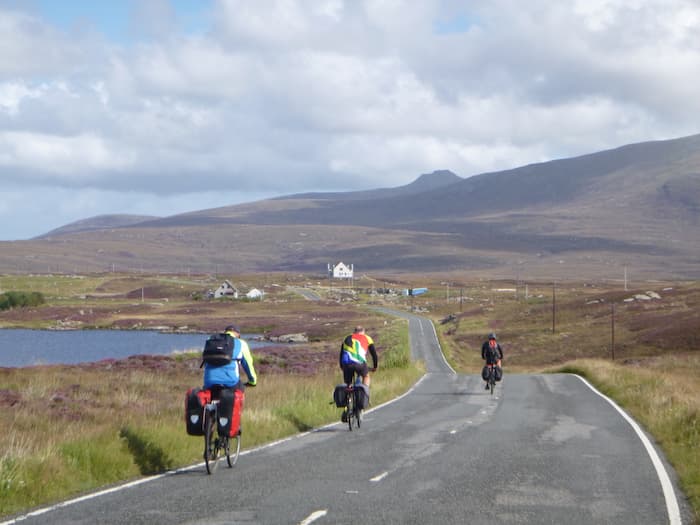
The next morning was ‘dreich’ which, according to a national poll, is the Scots favourite word. The island was doused in drizzle and its 124m-pimply highpoint, Rueval, was invisible in the gloom. Nonetheless, I insisted on stomping up it, for it was here that Bonnie Prince Charlie spent several weeks hiding before Flora MacDonald came to his aid. Then, we squelched out to the sea at Rossinish, from where he made his escape. With the trail quickly consumed by peat bog, we had to leap between tussocks, the long-limbed Posh in his element, the much shorter Studs often knee-deep.
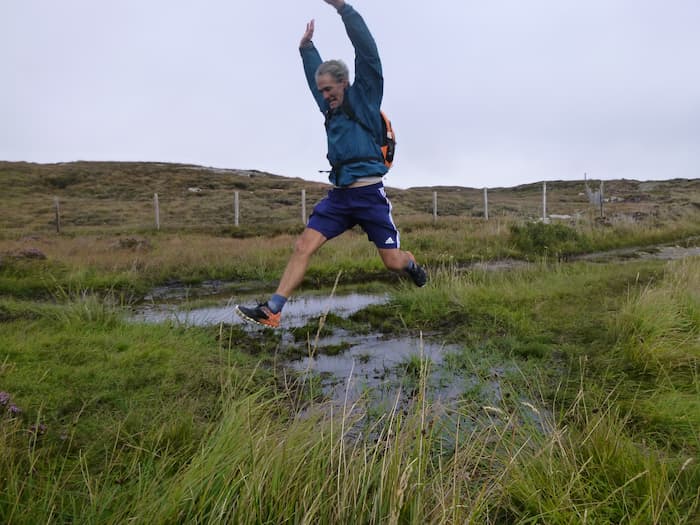
We were looking for the beach from where Flora MacDonald sailed to Skye on 28th June 1746, officially accompanied by her Irish maid, Betty Burke, but actually by Bonnie Prince Charlie in drag. Though it probably wasn’t the very spot, we found a rocky inlet that would do. While Posh and Studs played skimming stones, I stared out at the cold, dark sea, imagining how the defeated prince surely felt. Then again, once safely back in Europe, he quickly found comfort in a hedonistic lifestyle - whereas for her part abetting his escape, Flora MacDonald spent a year in the Tower of London.
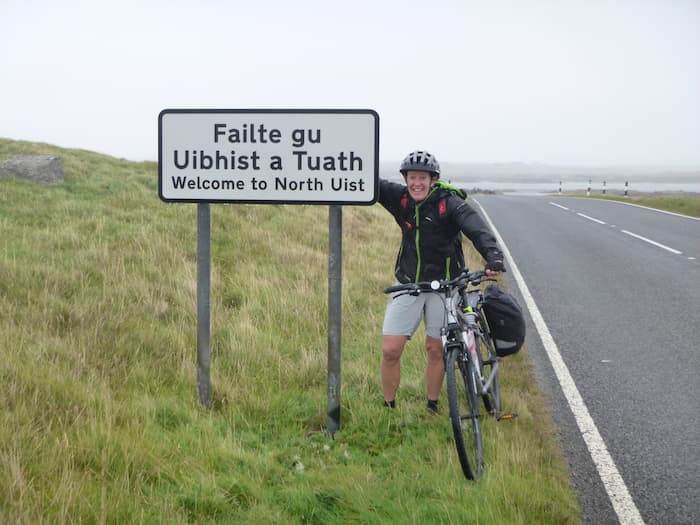
The remainder of our day involved a short cycle to North Uist, where we checked into a traditional hunting lodge overlooking Loch Langass. There was a Neolithic burial chamber just a short stroll away. ‘It’s one of the oldest standing buildings in northern Europe,’ I enthused, parroting my guidebook, but Posh and Studs headed for the snug tartan bar instead.
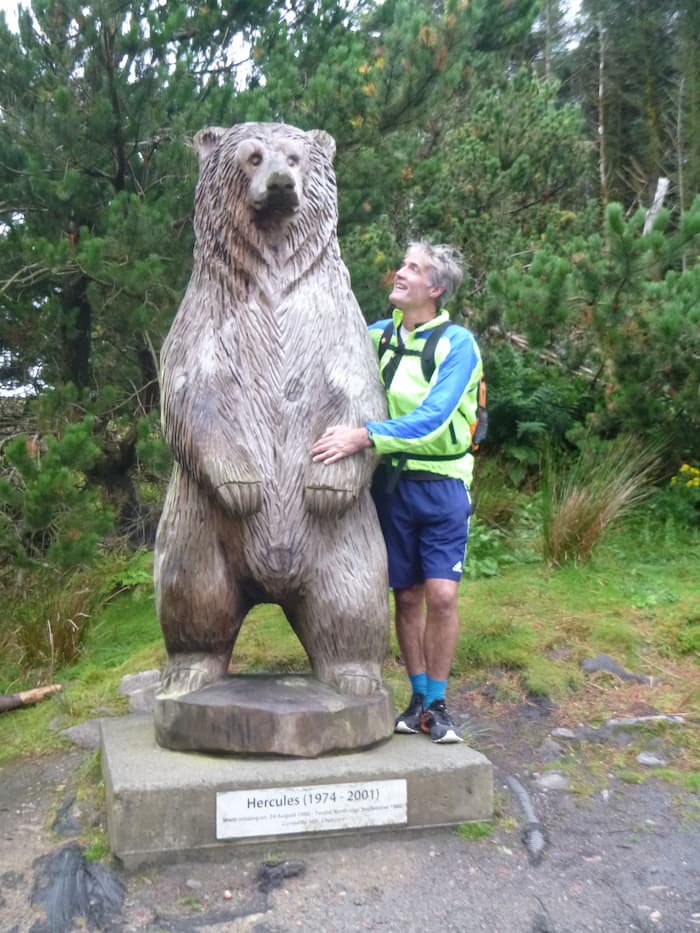
The following morning - though once again pressed by the ferry timetable - we detoured into Langass Wood, searching for Hercules. For while the prodigal Bonnie Prince Charlie was a divisive figure, everybody loves a cuddly grizzly bear. Born in a Scottish wildlife park in 1975 and fated to be put down due to overcrowding, Hercules was rescued by Scottish Commonwealth wrestling champion, Andy Robin. They staged bouts together, before Hercules branched off into an acting career. Then in August 1980, swimming in the sea off Benbecula while filming a toilet paper commercial, Hercules was swept away. After a tense hunt, he was found 24 days later in Langass Wood, by which time – with no inclination for hunting or foraging - he’d lost 100kg, half his body weight. He was subsequently chosen as Scottish Personality of the Year, appeared in the 1983 Bond movie Octopussy, and featured on the cover of Time magazine.

Fortunately, it took us less time to find his full-size wooden statue and we made the ferry from Berneray to Harris. Cycling to Tarbert along the Sound of Taransay, the beaches were among the finest I’ve ever seen - and all that was lacking was some sunshine and shelter from the sandblast.
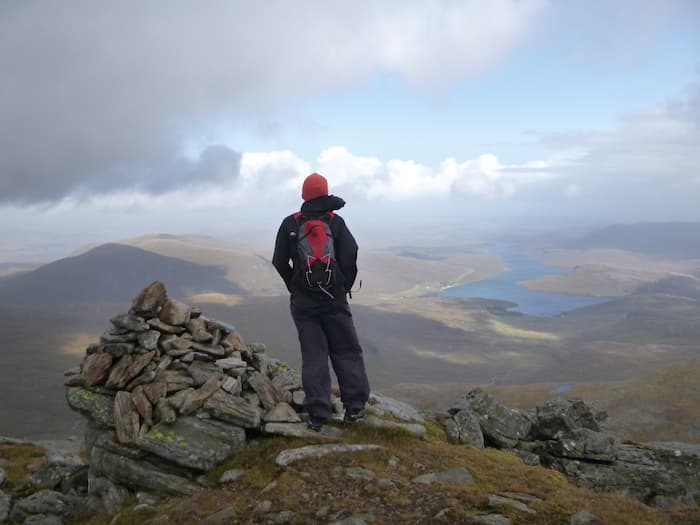
Our finale was a 120km shift from Tarbert to the incongruously named Butt of Lewis, on the island’s northern tip, for which the weather served up a squall gusting over 60kph - though fortuitously on our rear most of the way. After the gently rolling terrain of the Uists, mountainous Harris was a shock to the calves, and it took a steep haul to escape from Tarbert, in the lowest gear, standing on the pedals. Once over the pass, however, we were rewarded with a swooping descent that was enough to put a childish grin on the face of even the most cynical pension fund manager, such as Posh.
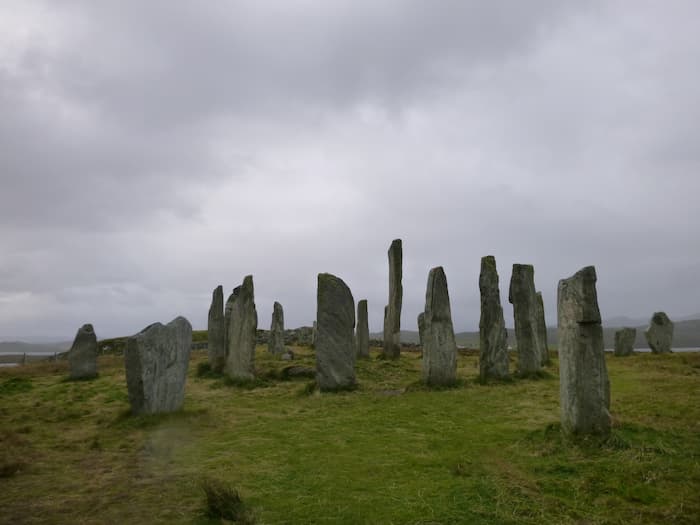
We freewheeled onto the Isle of Lewis, which by some canny piece of Scottish accounting shares the same landmass with Harris. There’s no definitive explanation as to why they claim to be separate isles - with some citing the dividing mountain range and others an ancient family feud – but they are topographically distinct, with Harris ruggedly alpine and Lewis a marshy bog.
Before reaching the only major town, Stornoway, we branched off west, exposing ourselves to the squall. Suddenly, seagulls were flung across the sky, sheep lurched drunkenly beneath our wheels and gusts almost toppled us. After a 15km pummelling, we pulled in at Callanish, the premier tourist attraction in the Hebrides. ‘It’s older than Stonehenge and the Giza Pyramids,’ I enthused, dropping my bike and striding towards the site. ‘Once you’ve seen one stone circle, you’ve seen them all,’ retorted Posh, heading for the café instead. Admittedly slanting rain didn’t portray the standing stones at their best, but they still impressed me, with their timeless elegance impervious to dreich weather.
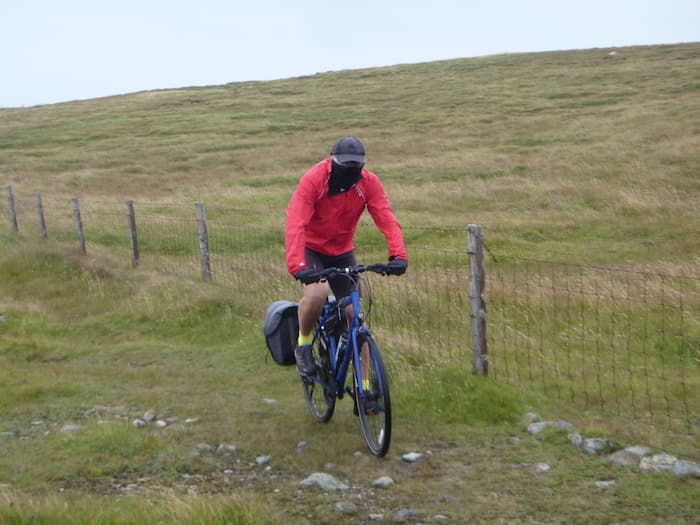
After Callanish, we turned north again, propelled by the wind through small communities dotting the west coast. Virtually every settlement had its own war memorial, with depressingly long roll calls and repetitive surnames. Some 7000 men from Harris and Lewis (one fifth of the islands’ population) went off to fight in WW1, of whom 1100 didn’t return. And then, just to rub it in, a troop ship bringing home demobilised soldiers sank on the rocks off Stornoway, drowning a further 280. Also dotted along the west coast were some more Neolithic standing stones, but I didn’t suggest visiting them

We cruised down to the sturdy harbour at Port of Ness from where each August, ten selected local fishermen sail to the uninhabited islet of Sula Sgeir, 60km offshore, to catch, skin and gut 2000 baby gannets, to supplement the islanders’ winter diet. It’s an interesting culinary and cultural detail, though that didn’t temper our disappointment at realising we’d missed the turnoff to the Butt of Lewis, several kilometres back.
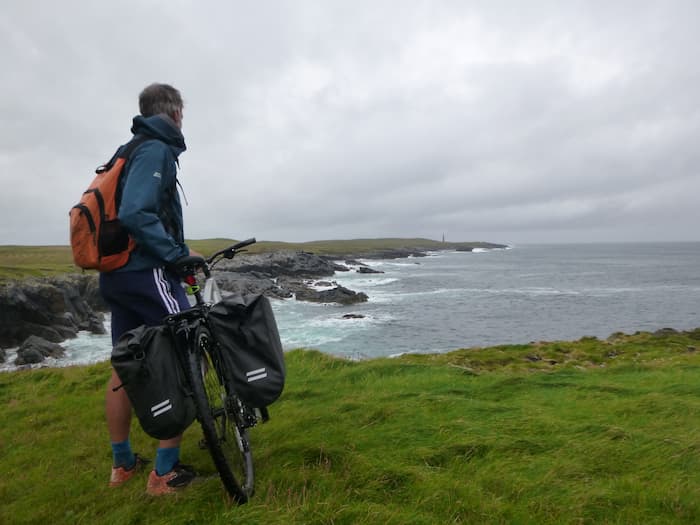
To compound the error, I attempted to forge a trail along the cliffs towards the lighthouse, which soon had us shouldering our bikes over precipitous drops. Just as I sensed mutiny amongst my team for tagging the Butt, we stumbled upon a gravel track which delivered us to the lighthouse and a sign indicating we’d completed the Hebridean Way. At a small sandy cove nearby, I thought it would be apt to finish with a swim, but no one could hear me over the gale and besides my fingers were too numb to get undressed.

_large.jpg)
